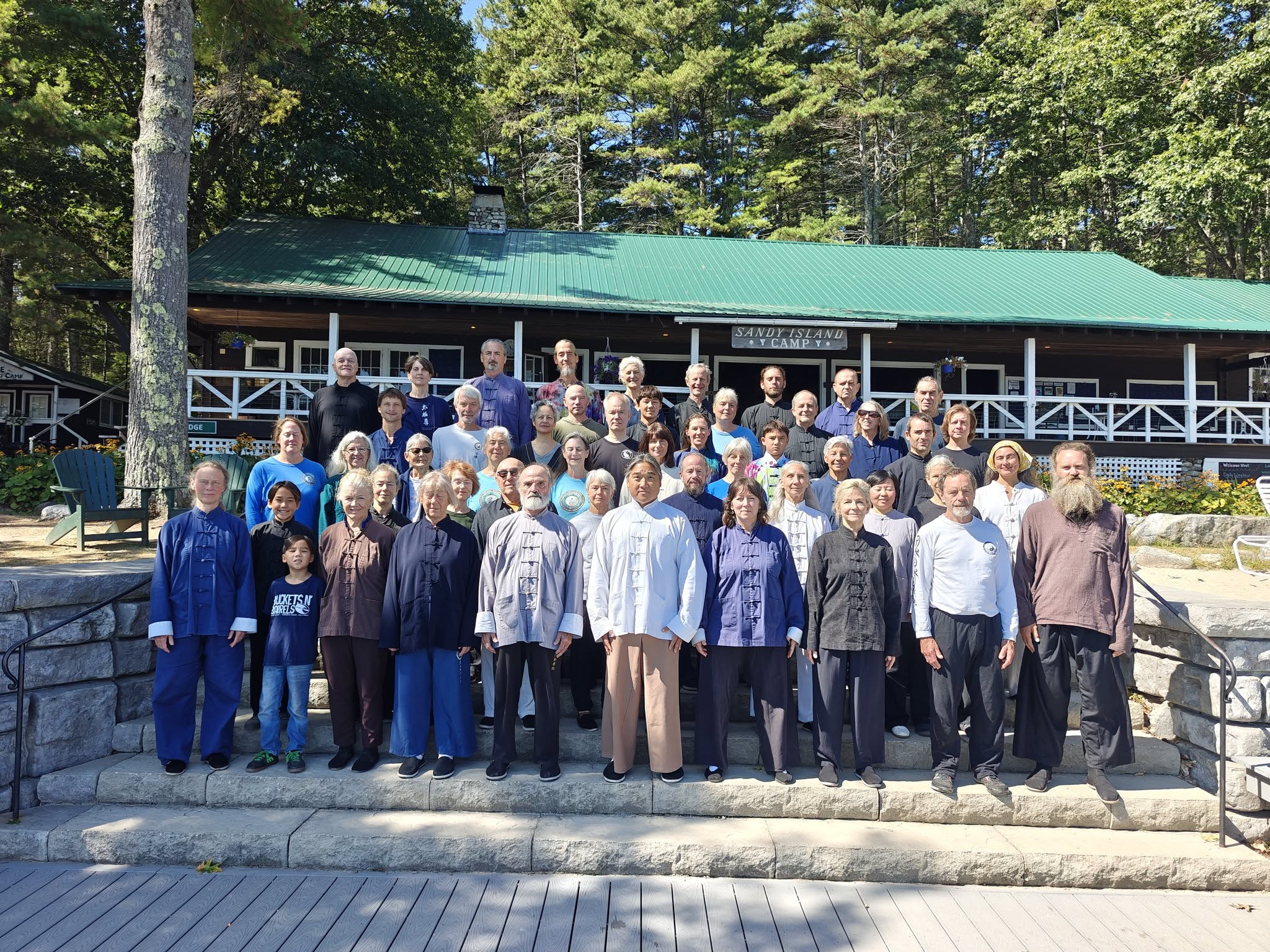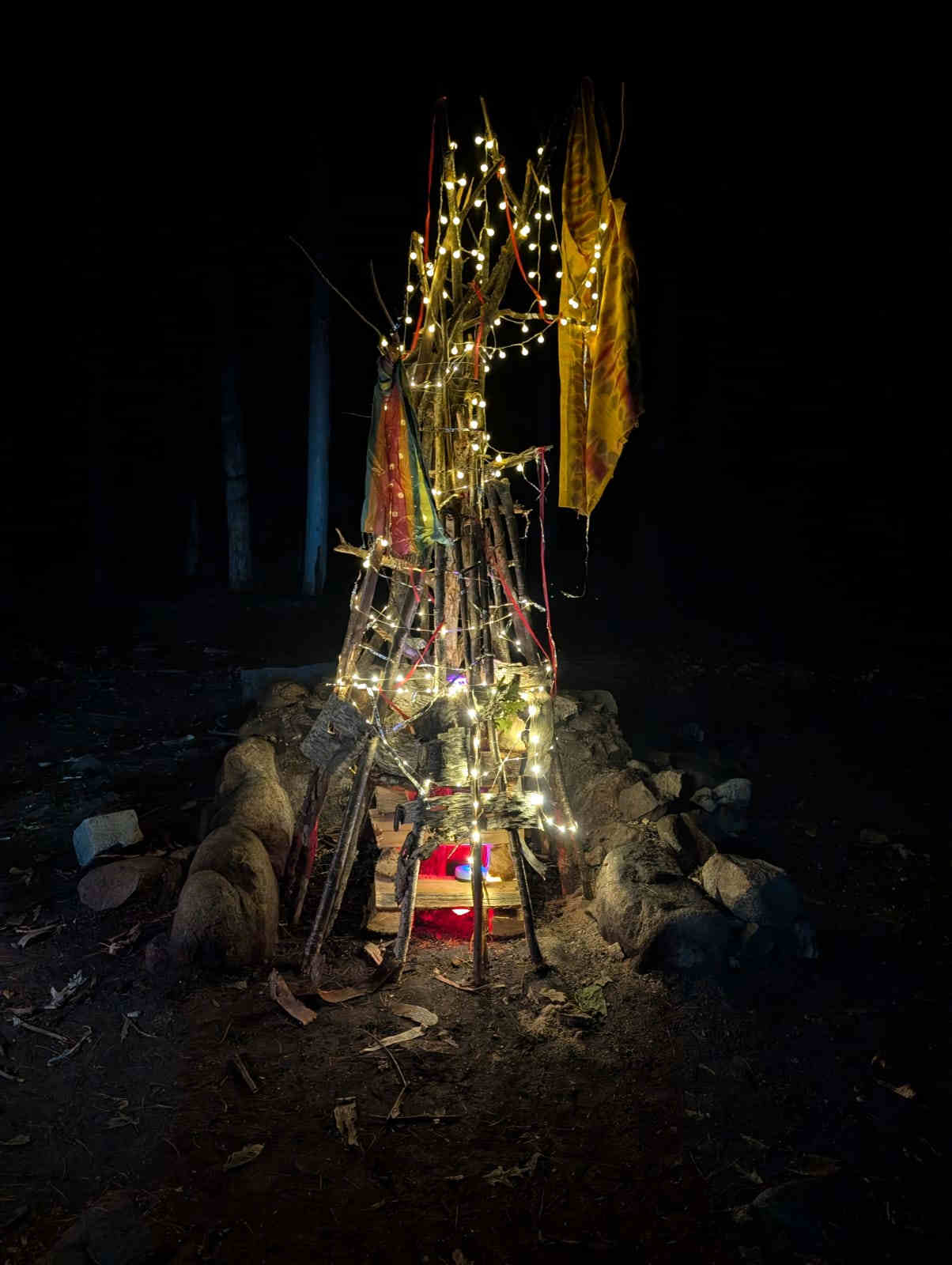This year at the Sandy Island camp, we received nice wooden swords as camp gifts. Many people personalized theirs, and one friend had sandpaper to fine-tune the hilt. Personally, I was perfectly happy with mine. It’s better quality than the wooden sword I have at home.
With the new swords, we started practicing with them already in the first class, but only with how to hold the sword in the left hand at the beginning. That's actually quite similar to how you keep your left hand in the set without the sword: thumb touching the pinky and ring finger, the index and middle fingers are slightly bent, with the fingertips almost aligned. Or maybe I keep my thumb a little differently. When you hold the sword with your right hand, grip close to the crossguard. I like to think of it as holding a pen or an egg in your fist - strong but soft. Don’t let the sword turn in your grip, but use your wrist to align the blade.

On the second class we practiced just the starting movement with the sword, how to circle your hands. Relax your shoulders. Bend your arms back. Turn your wrists over. The middle of the blade stays fixed at elbow height, while the rest of the sword circles around.
Over all we learned moves up to the first little dipper. From side sweeping turn your left foot slightly first. Both hands circle counterclockwise, the left hand goes first, and the right follows a little more slowly, not in sync. The sword makes a full circle. In the end, the left hand is close to the hilt. Watch the tip of the sword. Posture is not too upstraight.
Do bigger, like master said, and this applies to many excercises. Take bigger steps. Relax your shoulders more. Bend your wrists more. Personally I also like to practice the fast set with big movements, though it's usually taught and practiced with smaller movements to make it faster still.

Grandmaster taught previous week how to go to the third kick without touching the ground with the toes of your left foot, but instead pivoting on your right foot. Master instructed everyone to do this in the fast set, and it makes a lot of sense, since the turning would be difficult to do slowly. So from the second kick, keep your left knee up, turn and already start circling your hands, and finally kick.
This year it was too dry to have a real fire, so we made a fireless bonfire. We built it even taller than master's second son, decorating it with scarves, strings, lights and anything else we could find on the island to light up the party. It was easy to maintain, it wasn't cold without the fire, and some people even suggested we should do it more often.

If you had practiced tuishou with me, you might remember how my left shoulder used to make a popping sound back in the day. This time, in the following workshop, I practiced with a big partner, using really big moves, and my right shoulder started making the same sound. That was unexpected, but the sound is nothing to worry about, it doesn't hurt or feel uncomfortable. It did, howerer, make me pay more attention to my shoulders. In contrast to this post's theme, it made me try practicing the slow set with smaller movements, which helped me to discover new space to stretch everything back into bigger movements.
One thing to keep in mind, in order to honor the master, is to always address him as such. It's similar to how you wouldn't call your Chinese friend's mother by her first name, but rather mrs. followed by the family name. He also explained that lǎoshī is more academic, while shīfu is more practical.